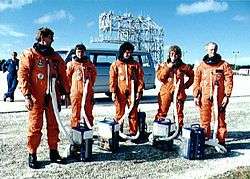Personal Egress Air Pack

Personal Egress Air Packs, or PEAPs, were devices on board a Space Shuttle which provided crew members with approximately six minutes of breathable air in the case of a mishap while the vehicle was still located on the ground. PEAPs did not provide pressurized air, meaning that they were only intended to be used should the air inside the shuttle cabin become unbreathable by way of noxious gases.
The devices gained notoriety due to the Challenger disaster. After the recovery of the vehicle cockpit, it was discovered that three of the crew PEAPs were activated: those of mission specialist Ellison Onizuka, mission specialist Judith Resnik, and pilot Michael J. Smith. The location of Smith's activation switch, on the back of his seat, means that either Resnik or Onizuka could have activated it for him. This is the most conclusive piece of evidence available from the disaster that shows that at least two of the crew members (Onizuka and Resnik) were alive after the cockpit separated from the vehicle. However, if the cabin had lost pressure, the packs alone would not have sustained the crew during the two-minute descent.[1]
The partial-pressure launch-entry suits replaced the PEAPs, which were subsequently followed by the "ACES" full-pressure suits, which include self-contained oxygen tanks.
References
- ↑ Joseph P. Kerwin. "Letter from Joseph Kerwin to Richard Truly relating to the deaths of the astronauts in the Challenger accident". National Aeronautics and Space Administration. Retrieved 2009-10-20.